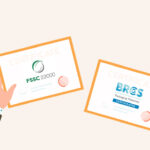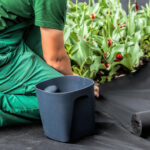Introduction
Polypropylene fabric is a versatile and durable material found in countless everyday items. From the sturdy reusable shopping bags you carry to the protective gear used in healthcare, this fabric’s importance spans various industries. Lightweight, strong, and resistant to chemicals, polypropylene fabric is an essential component in agriculture, packaging, and construction. This blog aims to shed light on polypropylene fabric and guide you through its fascinating production process, helping you understand why it’s so widely used and valued across different fields.
What is Polypropylene Fabric
Polypropylene fabric is a thermoplastic polymer made from polypropylene. This means it becomes soft when heated and hardens upon cooling, making molding into different shapes and products easy. The fabric is made by weaving or bonding fibers of polypropylene.
Basic Chemical Structure and Properties
Polypropylene’s chemical structure consists of long chains of the polymer propylene. These chains give the material unique properties, such as flexibility and strength.
Key Characteristics
- Lightweight: Polypropylene fabric is very light, making it easy to handle and transport.
- Durability: It is strong, long-lasting, and can withstand wear and tear.
- Chemical and Moisture Resistance: This fabric resists chemicals and moisture, making it ideal for many applications.
- Thermal Properties: Polypropylene can handle high temperatures without melting, making it useful in various settings.
Common Uses
- Construction Industry: Used in geotextiles for soil stabilization and erosion control.
- Packaging: Popular for making reusable bags and other packaging materials.
- Agriculture: Utilized in weed control fabrics and crop covers.
- Furniture: Used in the production of upholstery and outdoor furniture.
- Industrial Applications: Employed in manufacturing filters and other industrial products.
What Is Polypropylene Material?
Polypropylene is a type of plastic made from a polymer called propylene. It’s widely used because it’s strong, lightweight, and flexible. You’ll find it in everyday products like packaging, containers, and even fabric. It’s also resistant to heat, chemicals, and moisture, making it perfect for items that need durability.
Polypropylene can be molded into different shapes and sizes, and it doesn’t easily break down or wear out. Because of this, it’s often chosen for things like reusable bags, ropes, and household products. Plus, it’s recyclable, which helps reduce waste.
The Manufacturing Process of Polypropylene Fabric
Step 1: Extrusion Process
The manufacturing process begins with the extrusion of polypropylene. In this step, the raw polypropylene is melted and then pushed through a die to form thin, flat tapes, known as the tape process.
Step 2: Winding Process
Next, these tapes are wound onto large spools. This process ensures that the tapes are ready for the next stage, which involves weaving.
Step 3: Weaving Process
The tapes are woven together to create a fabric. This weaving process involves interlacing the tapes at right angles to form a strong and durable material.
Step 4: Extrusion Coating
After weaving, the fabric undergoes extrusion coating. This step applies a thin layer of molten polypropylene to the fabric. This coating adds extra strength and makes the fabric more resistant to water and chemicals.
Step 5: Printing Process
Finally, the fabric is printed with designs or information. There are two main methods used for printing:
- Flexographic Printing: This method uses flexible plates to transfer ink onto the fabric. It’s great for high-speed printing and large orders.
- Rotogravure Printing: This technique uses engraved cylinders to apply ink. It’s ideal for detailed and high-quality prints.
Each of these steps is crucial in producing high-quality polypropylene fabric, ensuring it meets the needs of various industries.
Advantages of Polypropylene Fabric
Cost-effectiveness
Polypropylene fabric is affordable to produce. Its efficient production process helps keep costs low, making it a cost-effective choice for many industries. It provides high-quality material without breaking the budget.
Versatility
This fabric is incredibly versatile. It can be used in many ways, from packaging and agriculture to construction and healthcare. Its adaptability makes it a go-to material for manufacturers looking for reliable and multi-functional fabric.
Low Density
Polypropylene fabric is lightweight due to its low density. This makes it easy to handle and transport. Despite being light, it remains strong and durable, providing the best of both worlds.
Understanding these advantages shows why polypropylene fabric is so widely used and appreciated in various industries. Its cost-effectiveness, versatility, and lightweight nature make it a top choice for many applications.
Applications of Polypropylene Fabric
Packaging Materials
Polypropylene fabric is widely used in packaging. It’s made into strong and durable bags and sacks. These lightweight materials can carry heavy loads, making them ideal for transporting goods.
Agricultural Textiles
In agriculture, polypropylene fabric is used for ground cover, weed control, PP woven bags, and rice bags. It helps keep the soil healthy and prevents weeds from growing, which is essential for good crop production. The fabric allows water and nutrients to pass through while blocking the sunlight weeds need to grow.
Furniture
Polypropylene fabric is also popular in the furniture industry. It’s used for upholstery, outdoor furniture, and spiral tubing because it’s durable and resistant to weather conditions. This fabric can withstand exposure to sunlight and moisture, making it perfect for outdoor settings.
Industrial Uses
Polypropylene fabric is used for metal wrapping in industrial settings. It also wraps metals to protect them from moisture and other environmental factors that could cause damage. Polypropylene fabric is also used in cement bags and fertilizer bags.
These applications show how versatile and valuable polypropylene fabric is across different sectors. Its durability, lightweight nature, and resistance to various elements make it a preferred choice for many industries.
Conclusion
Polypropylene fabric is a versatile, durable material made from melted, woven polypropylene tapes. Its production involves extrusion, winding, weaving, coating, and printing. The fabric is cost-effective, versatile, and lightweight, making it ideal for various applications, including packaging, agriculture, furniture, and industrial uses. Its benefits include being strong, resistant to chemicals and moisture, and easy to handle. Polypropylene fabric is likely to remain a valuable material in various industries due to its adaptability and efficiency, continuing to meet the evolving needs of manufacturers and consumers alike.




